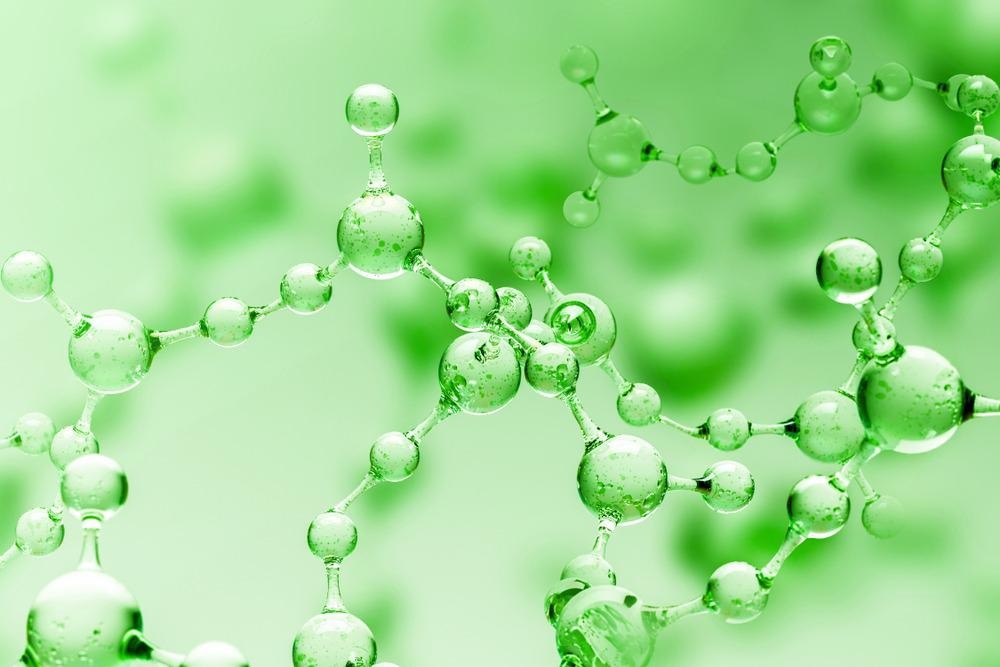Biocatalysis has become an important part of synthesizing organic products across the chemical and pharmaceutical industries. Scientists have used nanotechnology in enzyme immobilization strategies, which has significantly boosted biocatalysis, enhancing the production of various vital products.

Image Credit: ImageFlow/Shutterstock.com
What is Biocatalysis?
Biocatalysis is a process that utilizes natural substances, especially, enzymes, to enhance the speed of a chemical reaction. Scientists have stated that enzymes are responsible for the catalysis of hundreds of reactions including the production of cheese, alcohol, and biofuel.
Following technological advancements, researchers have better understood the structure and functionalities of enzymes, helping to design enzymes with enhanced activity, stability, sustainability, and substrate specificity.
Several biocatalytic processes have been utilized in chemical, fragrance, pharma, food, and agro-based industries. Biocatalysis-based research involves discovering novel biocatalysts, identifying target reactions, biocatalyst engineering, and process modeling.
Nanotechnology and Biocatalysts
Immobilized enzymes on support materials offer various advantages, including high catalytic efficacy, minimal reaction time, increased reusability, simpler downstream processing for continuous-scale operation, and a high enzyme-to-substrate ratio, which lowers the operational cost. Immobilization of enzymes on diverse nanomaterials has helped overcome the shortcoming related to conventional enzyme immobilization processes.
Immobilization of enzymes on nanomaterials, which is also known as nanobiocatalyst, has effectively boosted the reaction process. Several nanostructures, for example, nanopores, nanocomposites, nanotubes, nanosheets, and nanorods, are used to immobilize biocatalysts. Several enzymes, including beta-glucosidases, lipases, and cellulase, have been reported to be effectively immobilized in various nanoparticles, such as polymeric magnetic nanofibers, manganese dioxide, magnetic chitosan microspheres.
There are different types of nanobiocatalysts, such as transition metal oxide (e.g., nano-sulfated titanium dioxide), alkaline earth metal oxides (e.g., nano calcium oxide), mixed metal oxide (e.g., iron-tin nanomaterials) and supported metal oxide (e.g., nano potassium fluoride/calcium oxide-magnesium oxide). Some of the characteristic features of nanobiocatalysis are high activity, stability, selectivity, energy efficiency, and ease of separation from the reaction mixture.
In the production of biofuel, nanobiocatalysts, such as graphene, fullerene, titanium dioxide (TiO2), and ferric oxide (Fe3O4) increase the conversion efficiency of biomass. Studies have shown that small-sized nanoparticles with increased surface area strongly influence their catalytic property via enhancing the availability of active catalytic sites.
The common feedstock used to synthesize nanobiocatalysts is sunflower oil, rapeseed oil, soybean oil, jatropha oil, and olive oil. Some of the methods widely used for the synthesis of nanobiocatalysts are co-precipitation, sol-gel, sol-gel self-combustion, and impregnation.
Based on the binding capacity of the carrier material to the enzyme, the immobilization process has been classified as covalent binding, entrapment/encapsulation, cross-linking, and adsorption. Furthermore, a combinational strategy is also used to better bind nanoparticles with enzymes.
The Role of Nanobiocatalyst in Biocatalysis Process
There is a high demand for magnetic nanoparticles because of their prominent immobilizing effect, the increased surface-to-volume ratio, and quantum property. These nanoparticles are used to immobilize enzymes, for example, cellulase and lipase, for the production of biofuel from a marine microalga (Chlorella salina). Magnetic nanoparticles are popularly used for biocatalysis because they can be recovered easily using a magnetic field.
Scientists stated that immobilized enzymes help in the large-scale production of biodiesel owing to the reusing effect of immobilized enzymes multiple times. Apart from producing biofuels, immobilized enzymes are also utilized in the food, pharmaceutical, and chemical industries.
Cellulase is a major enzyme used for the large-scale production of biofuel. This enzyme is obtained from fungi (e.g., Penicillium, Trichoderma, Aspergillus) and bacteria (e.g., Pseudomonas and Bacillus). In biofuel production, scientists have immobilized cellulase enzymes on nanomaterials such as silica, nickel, carbon nanotube, and graphene, which has increased the reusability of the enzyme and has decreased the operational cost.
Studies have shown that immobilized cellulase has higher functional stability than free enzyme over a wider range of pH and temperatures. These studies have also reported that immobilized cellulase in magnetic nanoparticles produced twenty times higher concentrations of glucose as compared to free cellulase.
For the production of bioethanol, cellulosic biomass has been converted to glucose via the process of co-immobilization of cellobiohydrolase D and β-glucosidase A on superparamagnetic nanoparticles. This technique has shown higher enzymatic stability and enhanced production.
Scientists have also successfully immobilized lipases on magnetic nanocarriers, which not only retained specificity but also enhanced the stability of the enzyme in a wide range of pH and temperatures.
Studies have indicated that porcine pancreas lipase immobilized on surface-modified magnetic nanoparticles showed improved stability and specificity. Additionally, the immobilized lipase was recovered easily and reused effectively. Interestingly, for lipase immobilization, metallic nanocarriers enhanced the catalytic efficiency of the enzyme.
Future Perspective
Despite the immense potential of biofuel as an alternative source of energy, the commercialization of biofuel production procedure has not been up to the level. This is mainly due to the lack of efficient biomass conversion techniques in a cost-effective manner. The application of nanotechnology in biocatalytic reactions has opened the door for the production of biofuel in a cost-effective manner. At present, scientists have focussed on increasing the reusability of nanobiocatalysts, enhancing their catalytic property, selectivity, and stability.
As nanotechnology-based solutions have been successfully implemented in many industries, scientists are optimistic that in the future, the application of nanobiocatalysts will enhance the commercial production of biofuel and other economically important bioproducts.
References and Future Readings
Tsriwong, K. and Matsuda, T. (2022) Recent Advances in Enzyme Immobilization Utilizing Nanotechnology for Biocatalysis. Organic Process Research and Development. https://doi.org/10.1021/acs.oprd.1c00404
Sharma, A. et al. (2022) The impact of nanoparticles-based enzyme immobilization in biocatalysis. Nanomaterials for Biocatalysis, pp.149-168. DOI: https://doi.org/10.1016/B978-0-12-824436-4.00021-6
Singh, N. et al. (2020) Nano-immobilized biocatalysts and their potential biotechnological applications in bioenergy production. Materials Science for Energy Technologies, 3, pp. 808-824. https://doi.org/10.1016/j.mset.2020.09.006
Misson, M. et al. (2015) Nanobiocatalyst advancements and bioprocessing applications. Journal of the Royal Society, Interface, 12(102), 20140891. https://doi.org/10.1098/rsif.2014.0891
Disclaimer: The views expressed here are those of the author expressed in their private capacity and do not necessarily represent the views of AZoM.com Limited T/A AZoNetwork the owner and operator of this website. This disclaimer forms part of the Terms and conditions of use of this website.